This is a list of aviation-related events from 1926:
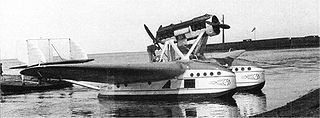
The Savoia-Marchetti S.55 was a double-hulled flying boat produced in Italy, beginning in 1924. Shortly after its introduction, it began setting records for speed, payload, altitude and range.

The Ambrosini SAI.7 was an Italian racing aircraft flown before World War II that entered production as a military trainer after the war. It was of conventional configuration, constructed of wood, with a tail wheel undercarriage. Power was provided by an air-cooled inverted inline engine, the Alfa-Romeo model 115 with 225 horsepower.
The Breda Ba.15 was a two-seat light aircraft produced in Italy in 1928.
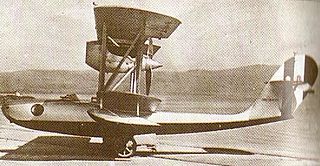
The CANT 25 was an Italian shipboard single-seat biplane flying boat fighter that entered service with the Regia Aeronautica in 1931.

The CANT 26 was an Italian two-seat biplane trainer built by CANT.

The CANT 6 was a flying boat designed for Italian military service in 1925. It was a large biplane of conventional design with three engines mounted in nacelles within the interplane gap. Only a single example was produced in its original military configuration, followed by two further aircraft redesigned as 11-seat passenger aircraft. One of these was retained by CANT, but the other entered airline service with Società Italiana Servizi Aerei.
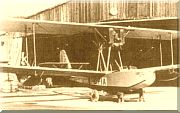
The CANT 7 was a flying boat and training aircraft that was produced in Italy in the 1920s. It was a conventional biplane design with single-bay, unstaggered wings of equal span, with the single engine mounted below the upper wing. The aircraft was designed to prepare pilots for flying boat airliners, and most of the examples produced were purchased by Società Italiana Servizi Aerei for this purpose.
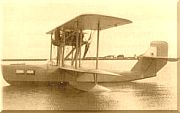
The CANT 10 was a flying boat airliner produced in Italy in the 1920s. It was a conventional biplane design with single-bay, unstaggered wings of equal span, having seating for four passengers within the hull, while the pilot sat in an open cockpit. The engine was mounted in pusher configuration in the interplane gap.
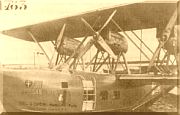
The CANT 22 was a flying boat airliner built in Italy in the 1920s and operated by Società Italiana Servizi Aerei (SISA) on their Adriatic routes. It was a conventional biplane design with unstaggered wings braced by Warren trusses. The three engines were mounted in nacelles carried in the interplane gap. Accommodation for passengers was provided within the hull, but the pilots sat in an open cockpit. Originally designed to carry eight passengers, an engine upgrade on later examples allowed the addition of two more seats.

The CANT 36 was a trainer developed in Italy in the 1930s. It was a conventional design with fixed tailskid undercarriage and accommodation for the pilot and instructor in tandem, open cockpits. Intended for advanced training, it was equipped with a powerful 187 kW (250 hp) engine. The single prototype was evaluated by the Regia Aeronautica, but when no purchase order was forthcoming, no further examples were built.
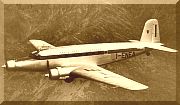
The Fiat G.212 was an Italian three-engine airliner of the 1940s. An enlarged development of Fiat's earlier G.12 transport, it was used in small numbers in commercial service and by the Italian Air Force.
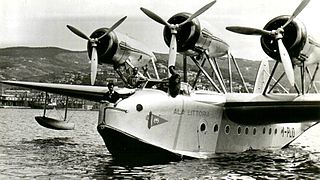
The Macchi M.C.100 was an Italian commercial flying boat designed and built by Macchi.
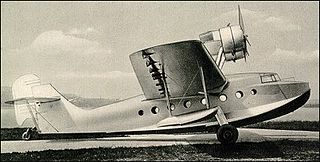
The Macchi M.C.94 was a 1930s Italian commercial flying boat built by Macchi.
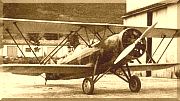
The Fiat G.8 was a military utility aircraft produced in Italy in the mid-1930s. Its design and production were undertaken at the CMASA works in Pisa which became part of Fiat in 1930, hence the type is sometimes referred to as the CMASA G.8 or Fiat-CMASA G.8. It was a conventional biplane design with staggered wings of unequal span braced by struts arranged in a Warren truss. The pilot and a single passenger sat in tandem open cockpits, and the aircraft was fitted with fixed tailskid undercarriage with divided main units.

The Savoia-Marchetti S.59 was a 1920s Italian reconnaissance/bomber flying boat designed and built by Savoia-Marchetti for the Regia Aeronautica.

The Macchi M.9 was a flying boat bomber produced in Italy close to the end of World War I, and shortly afterwards.

The Savoia-Marchetti S.63 was a single hull development of the Italian Savoia-Marchetti S.55 flying boat. It first flew as a bomber in 1927 but was rapidly converted into an airliner. The only S.63 built served with an Italian airline.
The CANT 12 was a flying boat and training aircraft that was produced in Italy in the 1920s.

The CANT Z.505 was a prototype trimotor transport flying boat built by CANT in the 1930s.

















